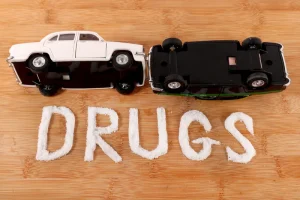
Friends and partners’ friends may serve as role models for drinking more than romantic partners do (Yancey, Grant, Kurosky, Kravitz-Wirtz, & Mistry, 2011), which may explain the increased importance of behavior modeling in explaining friends’ and partners’ friends’ associations with adolescents’ own alcohol use. In Model 4 (the fully specified model), the coefficients for adolescents’ friends’ and partners’ friends’ frequency of drunkenness remained significant; boys and girls were drunk more frequently at waves when their friends and romantic partners’ friends were drunk more frequently. However, partners’ frequency of drunkenness no longer significantly predicted adolescents’ own frequency of drunkenness. There were no significant time interactions for peers’ frequency of drunkenness for either girls or boys; thus, these interactions are not included in Model 5.
Why alcohol is so dangerous for young adults’ brains
Due to incomplete development of a child/adolescent’s brain, and the level of experience in individuals under the age of 21, they are different from adults across numerous factors. If your teen struggles with drinking, you may find that they’re not the same person they once were. You know the dangerous effects of alcohol on teens, so don’t ignore the situation if your teen shows signs of alcohol addiction. Talk about alcohol addiction with them and consider getting them professional help if they need it. Neurogenesis involves formation of new neurons and integration into functional neural networks, which is a critical component of nervous system development (128). Repeated alcohol use in adolescence, but not adulthood, decreases neurogenesis (129), and such changes may be evident long after alcohol use has stopped (129–131).
Talking to teenagers about drinking

In Model 3, which tested the associations between unstructured socializing and adolescents’ frequency of drunkenness, there were no significant coefficients for unstructured socializing predicting changes in boys’ or girls’ frequency of drunkenness. We chose to focus on outgoing nominations for both theoretical and practical reasons. From a theoretical standpoint, an individual’s perceived friends/partners should be the people s/he considers as sources of behavioral and attitudinal norms, whether or not those relationships are perceived mutually. In support of this statement, past research on friends and alcohol use has found socialization effects on alcohol use regardless of whether the friendship was reciprocated (Bot, Engels, Knibbe, & Meeus, 2005; Giletta et al., 2012).

Transmission of Alcohol Use in Friendship Groups
Once again, parents do not have much control over this (unless they subject their children to some sort of Draconian rule, which in many cases just causes a teen to rebel anyway, defeating the purpose). And I want parents to know that there is no way to protect your teenagers from this. And, for the most part, neither can many of the teachers or administrators. We first estimated multilevel models with no predictors (i.e., null models) to assess the intraclass correlation for frequency of drunkenness. The intraclass correlation coefficient for our outcome was .41 for boys and .46 for girls, indicating, for instance, that 41% of the variance in boys’ frequency of drunkenness was at the within-person, versus the between-person, level. Results for all multilevel models are reported in Tables 2 (for boys) and 3 (for girls).
Drugs at Music Festivals
“Our message is delay as long as you can,” says Squeglia, “because your brain is still developing, and let your brain develop and be as healthy as it can before you start engaging in things like alcohol and other substance use.” I turned 18 the day before I left home for university, conveniently passing the UK’s age threshold for buying alcohol just in time to explore student pubs and bars. When I signed up with a doctor near my new home, she asked how many units of alcohol I drank each week – a common way to measure alcohol intake here in the UK, with 1.5 units roughly equalling a small glass of wine.
Facts About Teen Drinking
For more information about alcohol’s effects on the body, please see the NIAAA Interactive Body. Adolescents typically have an increased desire to experience new things, but experimenting with alcohol is not a good idea. The Substance Abuse and Mental Health Services Administration (SAMHSA) provides the most reliable estimates of alcohol use by young people in the United States. A .gov website belongs to an official government organization in the United States.

Studies have consistently reported accelerated teenage alcoholism decreases in gray matter volume and attenuated white matter growth of the frontal and temporal lobes, with poorer white matter integrity throughout related networks (65–73). The frontal lobe is thought to be critical for higher-order cognitive control, and the temporal lobe plays an important role in learning and memory (88, 89). Likewise, neuropsychological studies demonstrate a possible dose-dependent response of alcohol use on executive functioning ability (53, 55) and learning and memory (54, 60, 61).
- Be aware of the laws about serving alcohol to minors in your state or territory, including in your own home, as these have changed in some states.
- And don’t worry—even if you do identify symptoms, there are steps you can take to reduce the risk of AUD and other alcohol-related consequences.
- Know where and how to get treatment and other support services and resources, including counseling or therapy (in person or through telehealth services).
- The extent of alcohol-related activation was greatest for those with the highest levels of monthly alcohol intake (see Figure 1).
- Celebrating the end of high school (schoolies week) is often linked to high levels of single-session drinking or deliberately drinking to get drunk.
“Just assuming that people will naturally develop responsible habits when it comes to these drugs is a fairly optimistic assumption,” he says. The most important changes include a decline in “grey matter” as the brain prunes away the synapses that allow one cell to communicate with another. At the same time, white matter – long-distance connections known as axons covered with an insulating fatty sheath – tends to proliferate. “They are like the brain’s super-highways,” says Lindsay Squeglia, a neuropsychologist at the Medical University of South Carolina.
How alcohol use disorder develops
In both adolescents and adults, drinking also compromises the ability to sense danger by disrupting the function of a brain region called the amygdala. Alcohol often produces rewarding feelings such as euphoria or pleasure that trick the brain into thinking the decision to drink alcohol was a positive one and that motivate drinking again in the future. The Recovery Village aims to improve the quality of life for people struggling with a substance use or mental health disorder with fact-based content about the nature of behavioral health conditions, treatment options and their related outcomes. We publish material that is researched, cited, edited and https://ecosoberhouse.com/ reviewed by licensed medical professionals.
